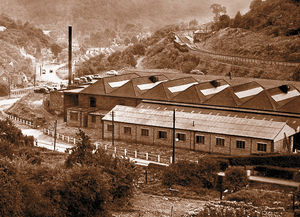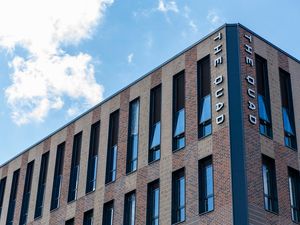Aga Coalbrookdale foundry closure: Heart of industry to beat no more
For the industrial historians, Coalbrookdale is well-nigh sacred. It is here that the world began. The industrial, westernised world, that is.
This is a world which has created untold wealth, built on the back of the millions who have toiled and sweated in factories and foundries and countless industries which can all eventually be traced back to this part of Shropshire.
“Coalbrookdale. Estd. 1709” is emblazoned proudly on the side of an old building at Coalbrookdale Works. Over 300 years of history and continuous working, all now being lost with the closure.
It was here, in that year, that the Quaker ironmaster Abraham Darby I successfully smelted iron ore using coke instead of charcoal as a fuel. This was to revolutionise the industry and paved the way for an explosion in the uses of iron and steel.

Production was now efficient and used an abundant local fuel. The works expanded and the Abraham Darby dynasty was to develop further improvements.
Then in 1779 Abraham Darby III erected the Iron Bridge, the world’s first, and a great advertising symbol for the potential of iron. The beams and ribs may have been cast at Coalbrookdale – there is great debate on the point by those historians. It was at Coalbrookdale too that Cornish engineer Richard Trevithick built the world’s first steam railway locomotive in 1802.
Generations of workers in “the Dale,” proud of their skills, have followed in the footsteps of this rich heritage. During the war part of the complex was taken over by Fisher & Ludlow, a company from the Birmingham area, and pressed into action making wings for Lancaster bombers.
The last was turned out in June 1945.
The Coalbrookdale Company had become part of Allied Ironfounders, formed in 1929 through a merger of a number of foundries, and it was in the 1950s that pioneering industrial historians began to raise awareness of the works as an industrial heritage site.
That historic original furnace used by the first Abraham Darby had long lain buried under rubble, and at one stage was in danger of being demolished.
But in a major project it was uncovered and showcased in 1959 as part of a small works museum. The furnace and museum were in 1970 incorporated in the new Ironbridge Gorge Museum which had been created in 1967.
The success and expansion of that museum has seen it living cheek-by-jowl next to the working industrial foundry, which ultimately became part of the Aga Rangemaster group and casting the iron for cookers.
Now this living industrial site, which has for so long lived in the shadow of the past, has no future.



